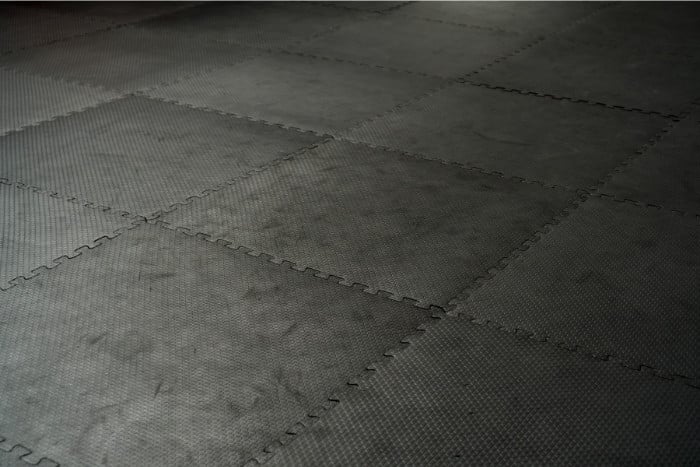Perhaps this is your first-time winter camping, or maybe you’ve been camping in the cold season countless times. It can still be unclear how warm your sleeping bag should be for a winter trip. In this article, we talk you through how warm your sleeping bag should be for winter camping.
Many factors determine how warm a sleeping bag should be when winter camping. Your body mass, the sleeping bag’s lower-limit temperature rating, what temperatures you will use it in, the shape of the bag, what you wear inside the bag, if you use an insulating floor mat, and what it is made of.
Read on for the perfect guide to measuring how warm your sleeping bag should be and how to select the best bag for your winter camping trip.
What Do Sleeping Bag Temperature Ratings Mean?
A temperature rating is important to understand if you’re going to be warm in a sleeping bag. Here we give you a guide to comfort and lower limit rating.
Temperature ratings are usually assigned by one of two entities: EN (European norms) or ISO (International Standard Organization).
So, if you’re wondering how warm a sleeping bag should be for your winter trip, then you can be sure its accreditation is reliable if it’s been tested by EN or ISO.
1. Comfort rating
A comfort rating is usually used for women’s sleeping bags, which suggests the temperature you’re likely most comfortable at instead of the maximum or minimum temperature the bag should be at.

2. Lower limit rating
A lower limit rating is used for both men’s and unisex sleeping bags, indicating the lowest temperature the user will still be comfortable at.
Generally, a lower limit rating is lower than a comfort rating because it’s closer to the minimum temperature at which the sleeping bag can be used.
How to Choose a Warm Sleeping Bag for Winter Camping?
With your knowledge of comfort and lower limit rating, you can ask how warm a sleeping bag should be for winter camping.
Winter camping demands a sleeping bag with a clear temperature rating, a shape designed for the cold, and insulation that will fit your needs.
In this section, we talk you through the temperatures you need to look out for, what shape you need to look for, and which insulation will work best.
1. Early Winter vs Deep Cold Winter
If you plan to camp in late fall or early winter, the temperatures could be quite different from mid winter. Early winter temperatures are still chilly.
Generally, you’re looking for a sleeping bag that can keep you warm in temperatures between 10°F and 16°F. On the other hand, when we say deep cold winter, we mean Everest cold!
So, you’re looking for a sleeping bag that can deal with temperatures from -0.4°F to -22°F.
It depends if you want to go for a sleeping bag that you know you’ll be comfortably warm in (follow the comfort rating) or if you feel you’re looking for a sleeping bag that’s lower limit will likely see you through the night.
It all depends on what temperature and conditions you are camping in. This will impact how warm your sleeping bag should be.
Our best advice is to research where you’re planning to camp and look for a sleeping bag that suits this environment best.
2. Shape
If camping in seriously cold conditions, your best bet for staying warm is with a mummy-shaped sleeping bag. The design of these bags is usually wider at the shoulders and narrower at the feet.
These sleeping bags are meant to be more restrictive so they can be as insulating as possible.
A rectangular sleeping bag would be roomier at the feet, so it would be better for warmer temperatures where you need more ventilation.
3. Insulation
The insulation of your sleeping bag contributes to how warm it will be. Deciding between synthetic, down-filled, or a combination can be confusing.
- Down-filled insulation is extremely warm and perfect for colder winter conditions. However, it loses its heat when damp or wet.
- Synthetic insulation is less warm but does not lose its insulation capacity when wet.
- Combination sleeping bags take the strengths of both synthetic and down-filled. These sleeping bags will keep you warm no matter your camping environment.
Making Your Sleeping Bag Winter Proof
It might be that winter sleeping bags are out of your price range, or you’re looking for ways to make your year-round sleeping bag useful in the winter.
We have a range of upgrades to make your sleeping bag warmer for those winter campouts.
1. Sleeping bag liner
A new winter sleeping bag can be an expensive investment, but you can always purchase add-ons for your current bag. Thermal liners can be a lifesaver when upgrading your sleeping bag.
Thermal liners or sleeping bag liners can add 10+ degrees to your sleeping bag insulation.
2. Floor mat
A floor mat or sleeping pad is also a great alternative to a winter sleeping bag. The floor can take a lot of your heat when sleeping, so it’s great to put a mat between you and the ground.
Floor mats will insulate your body from the cold ground and provide extra comfort.

3. Wear thermals
You can always wear extra clothes if it’s super chilly.
We recommend wearing thermals inside your sleeping bag to draw out the moisture from your body (sweat) instead of trapping it and making you cold.
4. Put a hat on
This might not completely replace a winter sleeping bag, but putting on a hat can make you warmer.
Your current sleeping bag may not have a hood, which is a good way to ensure your head isn’t poking out and getting cold all night.
5. Hot water bottle
Another way to bring up the temperature of your sleeping bag is to put something hot in it. This could be a hot water bottle or hand warmers.
Both will bring up the warmth of your sleeping bag before you sleep. Hot water bottles will last longer than hand warmers if you need to decide between the two.
6. Eat a big meal before you sleep
This is one of the oldest tricks in the book. If you eat a big meal before you fall asleep, something sugary or fatty, you’re replacing all those calories lost in the cold.
Your body will also be burning the calories you’ve eaten before bed to keep you warm inside your sleeping bag all night.
Conclusion
This article provides all the information you need to measure how warm your sleeping bag should be for your winter camping trip.
Always check that your sleeping bag has an accredited lower limit rating or comfort rating to ensure it’s been tested in the temperatures you want to use it.
When you know what temperatures to expect, what shape sleeping bag to select, and what insulation you should consider, paired with the other handy tips in this article, you can rest assured and warm in your sleeping bag!
